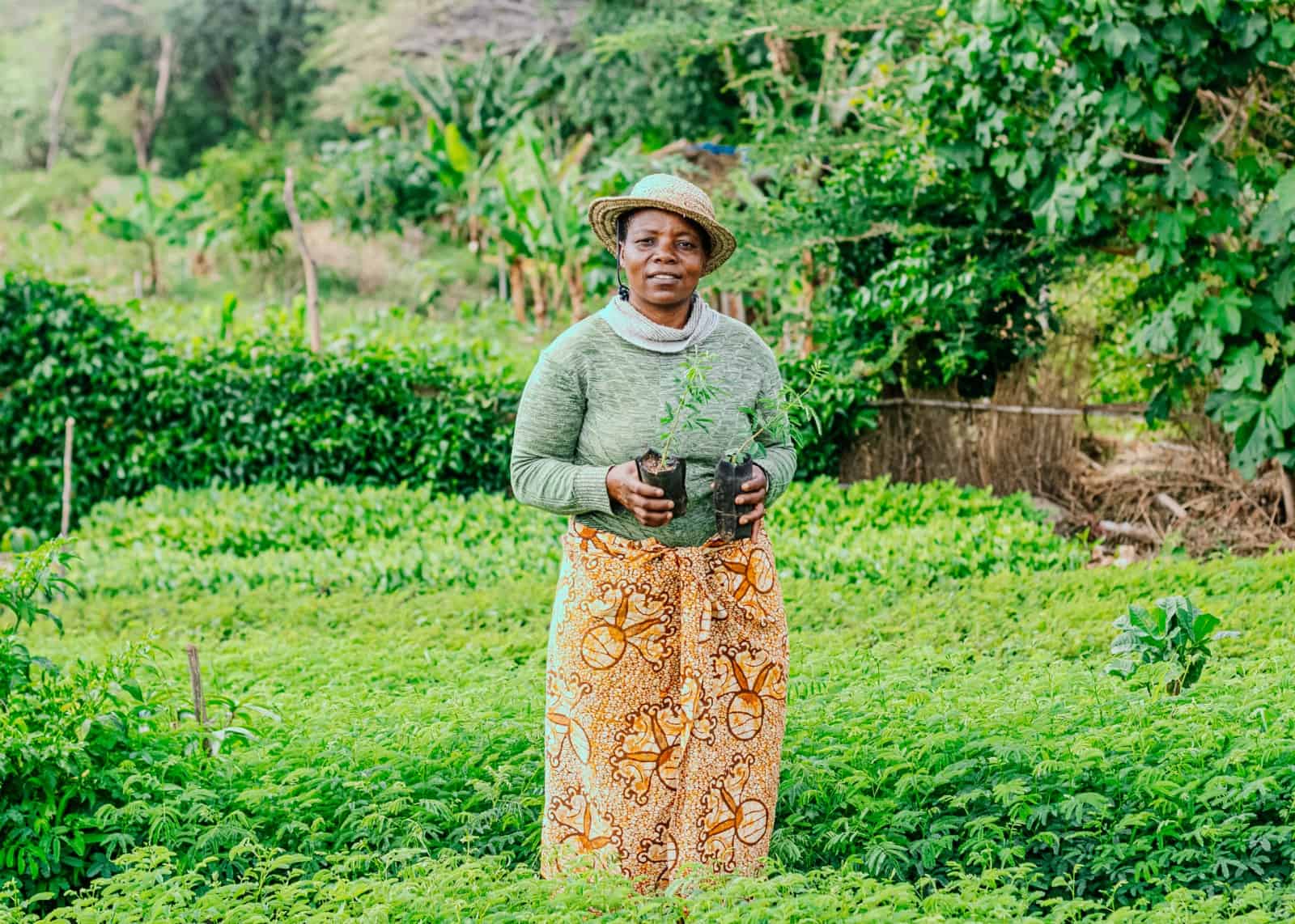FARMERS PLANT 350 MILLION TREES THROUGH AGROFORESTRY INITIATIVE
Trees for the Future and 61,000+ Farmers Celebrate Restoration Milestone
WASHINGTON DC (April 24, 2024) – Regenerative agroforestry nonprofit and United Nations World Restoration Flagship Trees for the Future (TREES) is celebrating a land restoration milestone this week – 350 million trees planted around the world.
“350 million trees planted by farmers, for farmers is an incredible milestone and we’re so proud of the work being done by TREES staff and the farmers,” says Vice President of Programs Brandy Lellou. “Farmers are leading the way in landscape-level land restoration through sustainable agroforestry, that results in a multitude of additional benefits.
Local TREES staff train farmers in a regenerative agroforestry technique called the Forest Garden Approach. Farmers grow trees from seed on their own land and plant them strategically to protect the land and support the farming family.
“We are not just planting trees and walking away. We work closely with farmers to make a plan for their land. Together, we put into consideration the environmental challenges they are facing and look at what they want to grow to eat and sell,” says Uganda Country Director Enoch Makobi. “This thoughtful approach to tree planting and land management ensures the trees survive, the land is restored, and the farming family can thrive for generations.”
Founded in 1989, TREES staff have worked around the globe. Today, TREES staff train farmers in sub-Saharan Africa in an agroforestry technique called the Forest Garden Approach. The average Forest Garden is made up of 2,500 – 4,000 trees to restore and protect the land and dozens of food and resource crops for the family to eat and sell.
“Trees planted in Forest Gardens are repairing degraded soil, channeling water back into the ground, capturing and sequestering carbon, providing habitat for diverse animal species, and produce food and resources for farming families,” says Lellou.
“If the child lacks food, they come into this forest of food, they eat. If there is no money, we go to the farm, we harvest some vegetables, we get money,” says Kenyan farmer Raphael Owaka. “Trees which are planted are making the whole atmosphere cooler and cooler. We are on the road to success.”
By the Numbers:
- 350 million trees planted since 1989
- 61,000+ farmers trained in the Forest Garden Approach since 2014
- 225 million trees planted in Forest Gardens since 2014
TREES currently works with farmers in Senegal, Mali, Kenya, Tanzania, and Uganda. Work is funded by corporate partners, institutional funders, and individual donors.
“We’re grateful for the dedicated support of all our partners and donors,” Lellou says. “As we celebrate Earth Day and Arbor Day this week, we’re reminded of how many people are actively investing time, energy and resources into addressing climate change and supporting those that are most impacted by it.”
###
Trees for the Future (TREES) trains farmers in agroforestry and sustainable land use—so that they can build vibrant regional economies, thriving food systems, and a healthier planet. TREES is a registered nonprofit based in the US and working across sub-Saharan Africa. The United Nations named TREES a World Restoration Flagship in 2024.
